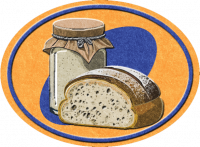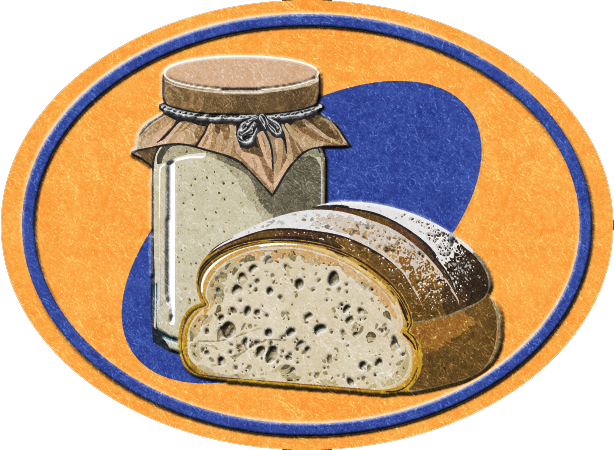AY Honor Fermentation Answer Key
1
Fermentation, using microbes to transform food, dates back millennia, likely discovered by accident when food spoiled “tastily.” It preserved harvests, enhanced flavours, and shaped diets globally.
Pathfinders discuss two ancient uses (from six options) and discuss one modern use (from three options), tying to God’s provision through nature’s processes.
Ancient Cultural Uses:
- Ancient Egypt – Leavened Bread (~4000 BCE): Egyptians fermented dough with wild yeast, creating fluffy bread, a staple offering to gods and Pharaohs (Exodus 12:15 context). Stored grain lasted longer, feeding cities. Discussion: “Egyptians kneaded dough in Nile heat—yeast bubbled up! It fed thousands, like God’s manna.”
- China – Soy Sauce (~500 BCE): Fermented soy beans with mould and salt made a savoury sauce, preserving protein in Han Dynasty diets. Still key in Chinese cooking. Discussion: “No fridges—China kept beans tasty for years! Soy sauce shows God’s clever food design.”
- Mesopotamia – Yoghurt (~6000 BCE): Nomads stored milk in goat stomachs; bacteria turned it to yoghurt, lasting weeks. Spread to Sumerians. Discussion: “Milk went thick, not bad—nomads loved it! God gave microbes to save food.”
- West Africa – Kenkey (~1000 BCE): Fermented maize dough, cooked into a sour staple, fed Ghanaian tribes. Portable for travel. Discussion: “Africa turned corn into kenkey—sour, yummy, lasting! God’s microbes helped tribes thrive.”
- Inca Empire – Chicha (~500 CE): Chewed maize, spit, and fermented into a mild drink for rituals in Peru. Preserved crops. Discussion: “Incas made maize drink for worship—fermentation kept it fresh. God’s nature aided them!”
- India – Dosa (~100 CE): Fermented rice-lentil batter made crispy pancakes, a South Indian staple, boosting nutrition. Discussion: “India’s dosa bubbled overnight—tasty, healthy! God’s tiny bugs made meals better.”
Modern Uses:
- Yoghurt Production: Factories use bacteria (Lactobacillus) to thicken milk, sold globally for snacks, health. Discussion: “Yoghurt is in every shop—bacteria make it creamy! God’s microbes still work today.”
- Kombucha: Fermented tea with a SCOBY, bottled for gut health, popular in cafés. Discussion: “Kombucha fizzes—modern folks love it! God’s old trick’s now trendy.”
- Sourdough Bread: Artisanal bakers ferment dough for tangy loaves, reviving ancient methods. Discussion: “Sourdough’s back—crusty, sour! God’s yeast keeps feeding us.”
Teaching Tip:
Start: “Ever taste sour yoghurt? That’s fermentation—old as dirt!” List six ancient uses on a board—read short descriptions.
Pathfinders pick two, discuss: “Why did Egypt use bread? How is it God’s plan?”.
Pick one modern use, ask: “Seen yoghurt lately? Same microbes!”.
Workbook: Write ancient and modern uses.
Say: “God made tiny helpers to feed us forever!”
2
Fermentation is a process where microorganisms like bacteria or yeast transform food by breaking down sugars, creating new flavours, textures, and nutrients. It’s a natural, controlled “spoilage” used for preservation and taste. Pathfinders learn the science—how microbes work and one chemical process.
Definition and Microorganisms: Fermentation happens when bacteria (e.g., Lactobacillus in yoghurt) or yeast (e.g., Saccharomyces in bread) eat sugars, producing acids, gases, or other compounds. Bacteria create tangy flavours (sauerkraut), while yeast makes dough rise (bread). These microbes are God’s tiny workers, turning raw ingredients into safe, tasty foods, a process as part of creation’s design.
Detailed Science:
- How It Works: Microbes “eat” carbohydrates (glucose, lactose), releasing energy and byproducts. In lactic acid fermentation, Lactobacillus breaks lactose in milk into lactic acid, thickening yoghurt (https://culturesforhealth.com/blogs/learn/yogurt). Acetic acid fermentation needs oxygen—Acetobacter oxidises sugars, making vinegar’s sharp bite (https://fermentools.com/).
- Conditions: Fermentation needs warmth (20-30°C), moisture, and sometimes salt or starters (e.g., SCOBY for kombucha). Anaerobic for lactic acid (no air, like sealed jars); aerobic for acetic acid (air exposure).
- Safety Note: Good microbes out compete bad ones if conditions are right—cleanliness is key!
Teaching Tip:
Show a jar with cabbage (pre-prepped, day 1 vs. day 3).
Say: “Bacteria make this sour—cool, right?”
Explain microbes: “Lactobacillus loves sugar, makes yoghurt thick!”
Pick one process: read description (use Cultures for Health printout). Watch a short video (e.g., “How Sauerkraut Is Made,” YouTube).
Ask: “What’s bacteria doing? Seen vinegar?”.
Workbook: Draw microbe or write process. “God’s microbes craft food!”
3
4
Economic Value: Fermentation adds value to cheap ingredients. Example: Tempeh—soybeans become protein-rich meat substitute. Why Ferment? Rhizopus mould turns low-cost beans into tempeh, a pricey Indonesian staple. Farmers profit, families eat well—God’s economy at work!
Teaching Tip: List six reasons on a board. Pathfinders pick three, read examples.
Ask: “Why save cabbage? Love miso’s taste?”.
Share: “Sauerkraut kept folks fed—God’s plan!”
Workbook: Write reasons, and foods.
Say: “Fermentation’s God’s kitchen magic!”
5
6
7
8
9
10



